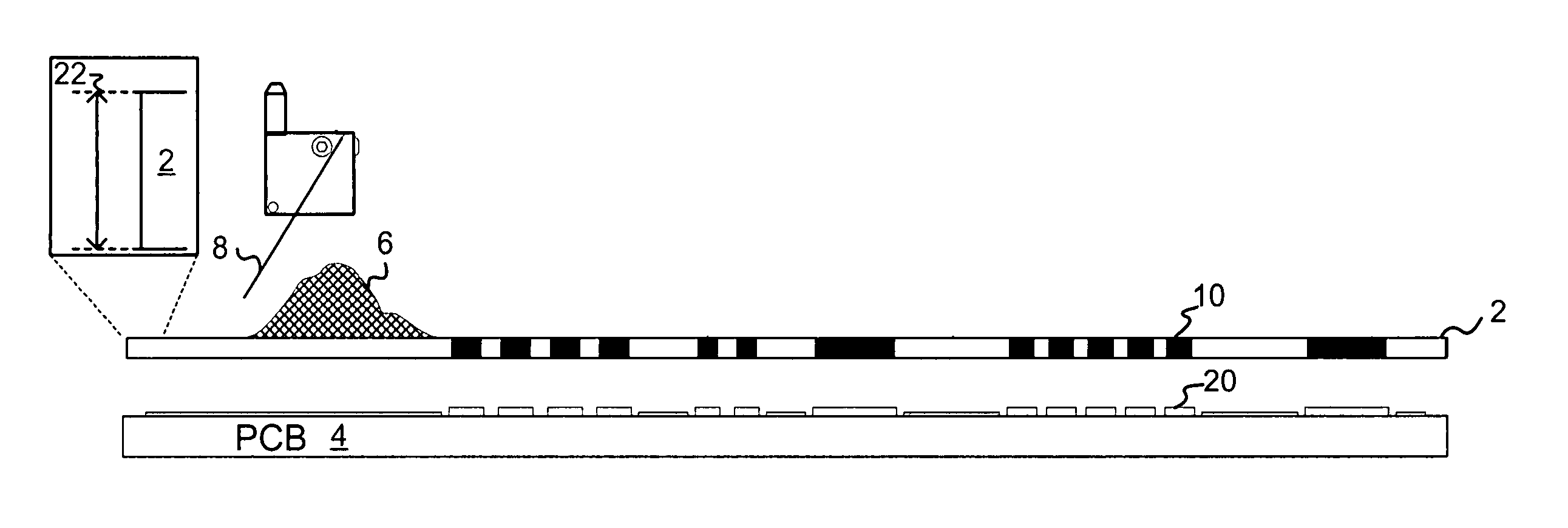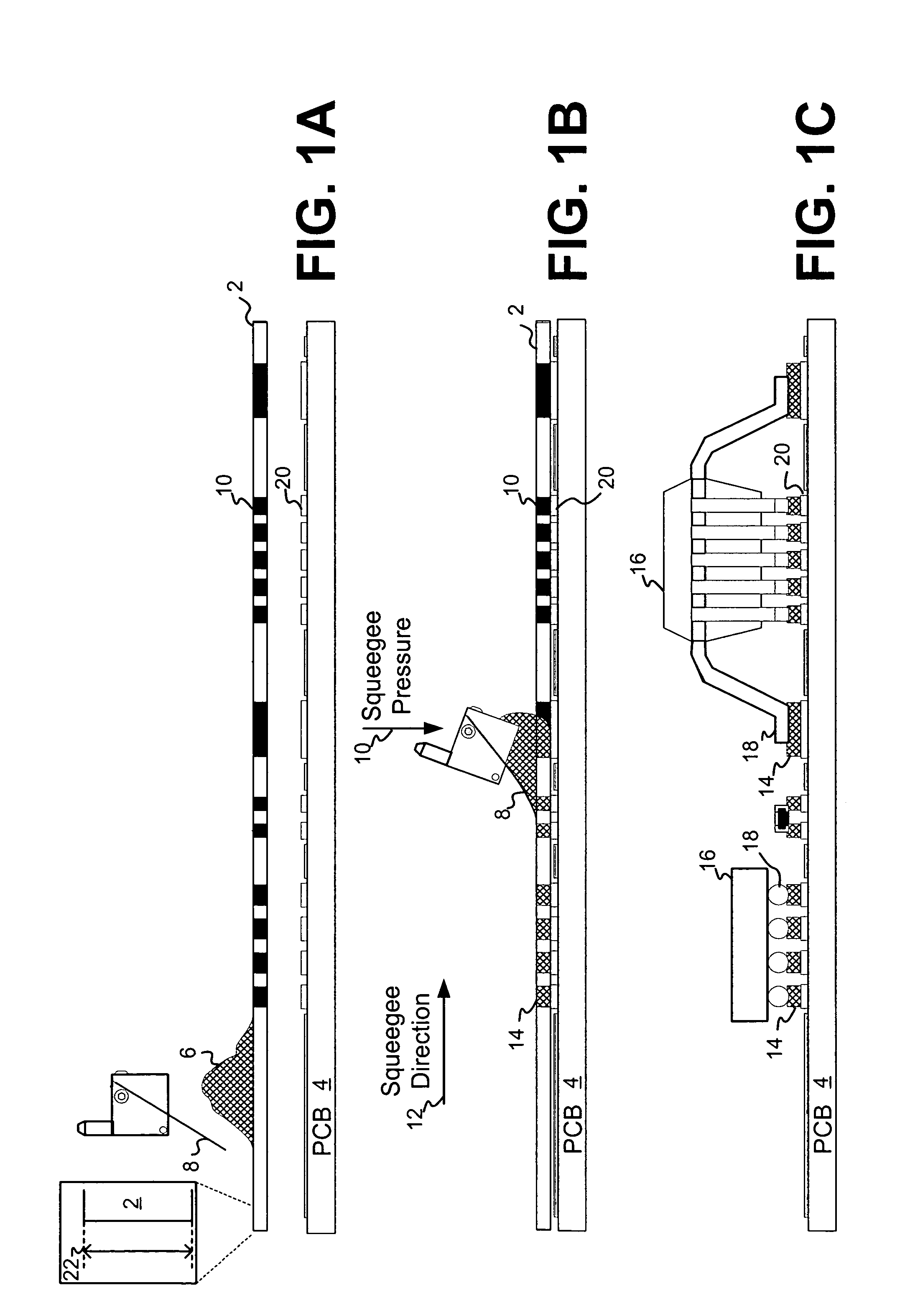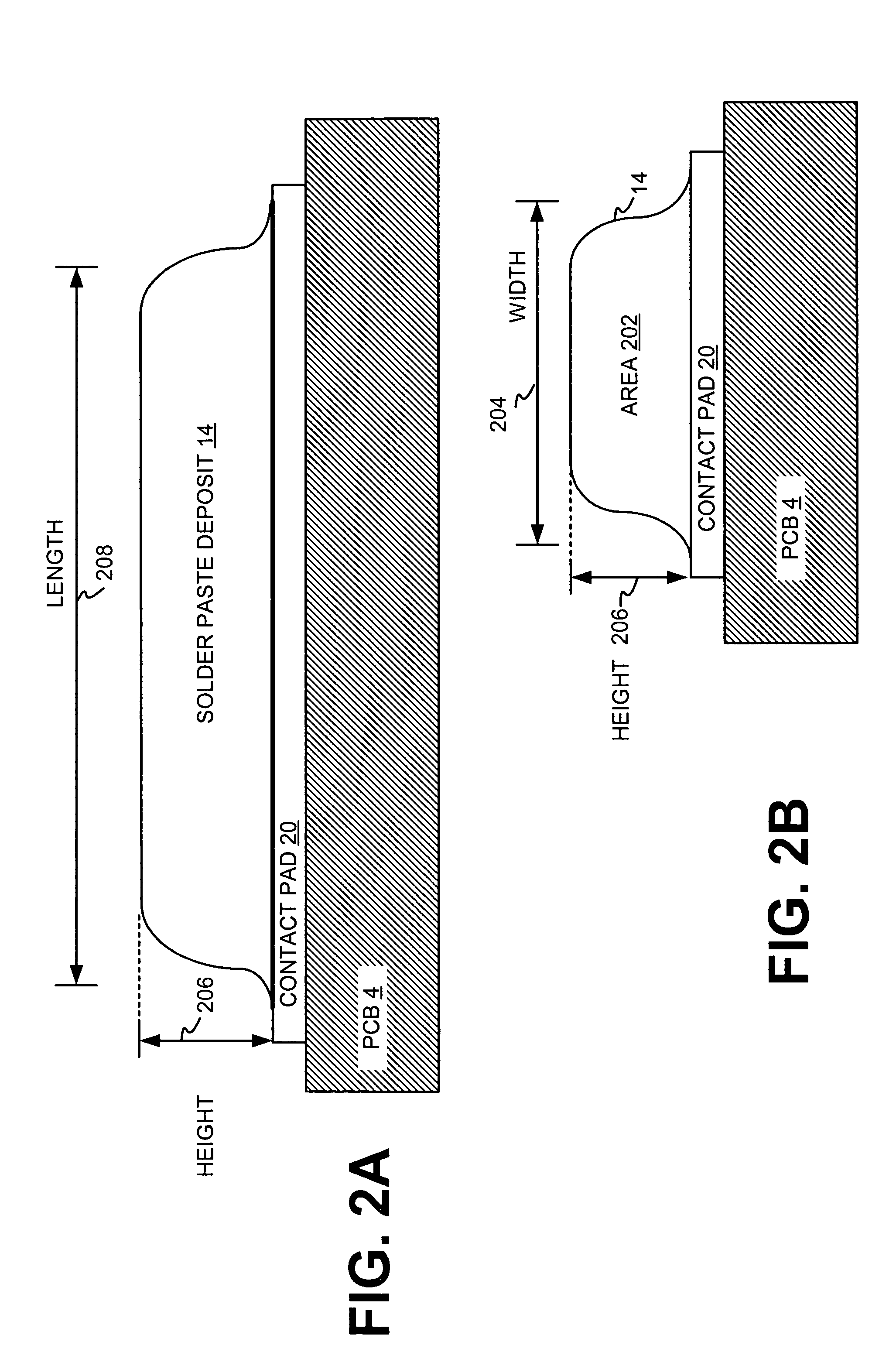System and methods for data-driven control of manufacturing processes
- Summary
- Abstract
- Description
- Claims
- Application Information
AI Technical Summary
Benefits of technology
Problems solved by technology
Method used
Image
Examples
Embodiment Construction
[0038]Several embodiments of a system that can be used for data-driven control of complex high-noise manufacturing processes will now be described in detail. While the embodiments of a hybrid, closed-loop control system will be described in connection with several figures, there is no intent to limit the system to the embodiment or embodiments disclosed therein. On the contrary, the intent is to cover all alternatives, modifications, and equivalents included within the spirit and scope of the invention as defined by the appended claims.
[0039]Controlling a Stencil Printing Process
[0040]Referring now to the drawings, reference is made to FIGS. 1A–1C, which depict a PCB undergoing several phases of the stencil printing process. In FIG. 1A, a metallic stencil 2 is placed over a PCB 4 and solder paste 6 is kneaded onto one end of stencil 2. A squeegee 8 is positioned at the same end as solder paste 6. Because FIGS. 1A–1C are cut-out, side views, only a two-dimensional representation is m...
PUM
| Property | Measurement | Unit |
|---|---|---|
| Pressure | aaaaa | aaaaa |
| Length | aaaaa | aaaaa |
| Volume | aaaaa | aaaaa |
Abstract
Description
Claims
Application Information
 Login to View More
Login to View More - R&D
- Intellectual Property
- Life Sciences
- Materials
- Tech Scout
- Unparalleled Data Quality
- Higher Quality Content
- 60% Fewer Hallucinations
Browse by: Latest US Patents, China's latest patents, Technical Efficacy Thesaurus, Application Domain, Technology Topic, Popular Technical Reports.
© 2025 PatSnap. All rights reserved.Legal|Privacy policy|Modern Slavery Act Transparency Statement|Sitemap|About US| Contact US: help@patsnap.com



